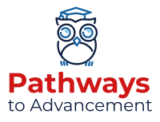Students today have more choices than ever in how they pursue their degrees. Higher education institutions now offer a variety of learning formats, from traditional in-person classes to flexible online programs, allowing students to choose a style that best fits their needs. Choosing the right format can significantly impact a student’s academic success, motivation, and overall learning experience. We’ll explore the different learning formats available in higher education and provide insights on identifying your personal learning style to help you select the right school and program.
Understanding Learning Styles
Before diving into learning formats, it’s essential to understand your unique learning style. A learning style is the way you naturally process and retain information, and it can play a big role in your academic performance and satisfaction. Here are some common learning styles:
- Visual Learners: Prefer using images, maps, and diagrams to understand information.
- Auditory Learners: Learn best through listening to lectures, discussions, or audio materials.
- Kinesthetic Learners: Prefer hands-on activities and learning by doing.
- Reading/Writing Learners: Learn most effectively through reading and writing activities.
To identify your learning style, consider how you best retain information or try taking a learning style assessment. Knowing your preferences can help you choose a learning format that complements your strengths and supports your academic journey.
Overview of Learning Formats in Higher Education
Colleges and universities are increasingly offering diverse learning formats to accommodate students’ different needs and lifestyles. These formats include traditional classroom settings, fully online programs, and even innovative approaches like competency-based education. The flexibility of these options means that students can select a path that aligns with both their academic goals and personal commitments. Let’s explore the most common formats and what they offer.
Types of Learning Formats in Higher Education
1. Traditional Classroom Learning
Traditional classroom learning, also known as face-to-face instruction, involves attending classes on campus at scheduled times. Students engage directly with instructors and classmates, participating in discussions, group activities, and in-person lectures.
Benefits: The classroom environment fosters direct interaction and networking opportunities. Students can ask questions in real-time, benefit from group work, and have access to on-campus resources.
Best for: Students who thrive in structured settings and enjoy social interaction. Visual and auditory learners may also benefit from classroom instruction, as they can observe body language and hear discussions in person.
2. Online Learning
Online learning takes place entirely through digital platforms, allowing students to access course materials, submit assignments, and engage in discussions from anywhere with an internet connection.
Benefits: Online learning offers unparalleled flexibility, enabling students to balance their studies with work, family, and other responsibilities. Many online programs also allow students to set their own pace, whether that’s part-time or full-time.
Ideal for: Self-motivated learners who require a flexible schedule. Reading/writing learners and those who are comfortable with digital tools may find online learning to be an effective format.
3. Hybrid/Blended Learning
Hybrid learning combines online coursework with in-person sessions, offering a mix of digital flexibility and face-to-face engagement.
Benefits: Students benefit from the structure and social aspect of classroom learning while also enjoying the convenience of online coursework. This balance allows for flexibility without losing in-person support.
Great for: Students who prefer some in-person interaction but need a flexible schedule. It’s also suitable for learners who appreciate hands-on activities but want to manage their time more independently.
4. Competency-Based Education (CBE)
Competency-based education focuses on mastering specific skills and knowledge at an individual pace. In this model, students progress once they demonstrate competency in each subject area, regardless of how long it takes.
Emphasis: CBE is often career-focused, designed to help students gain specific, job-related skills. This model allows students to accelerate their education by skipping over material they’ve already mastered.
Suitable for: Self-paced learners who are goal-oriented and career-focused. CBE is ideal for those looking to build a solid skill set for immediate application in the workforce.
5. Accelerated Bachelor Programs
Accelerated bachelor’s degree programs allow students to complete their degrees in a shorter time frame by condensing the material into intensive courses. Programs may be offered online or in person.
Benefits: Completing a degree faster can lead to quicker career advancement or help students enter the job market sooner. Accelerated programs often appeal to students eager to finish their education without a lengthy time commitment.
Best for: Highly motivated learners who can manage fast-paced environments. It’s suitable for students who can devote extra time to their studies and remain focused.
6. Bootcamp-Style Learning
Bootcamps are intensive, short-term programs focused on practical skills and real-world applications. They’re especially popular in fields like coding, data science, and digital marketing.
Benefits: These programs offer immersive learning experiences, often with hands-on projects and industry-aligned skills. Bootcamps can provide a fast track to acquiring valuable skills that are in demand in today’s job market.
Ideal for: Students who prefer hands-on, project-based learning and can commit to a rigorous schedule. Bootcamp-style learning is particularly suited to kinesthetic learners.
7. Experiential Learning and Cooperative Education
Experiential learning involves applying classroom knowledge in real-world settings through internships, apprenticeships, or cooperative (co-op) programs.
Benefits: Students gain practical experience and build professional networks while still in school. Experiential learning often results in a more well-rounded education by connecting theory with practice.
Great for: Hands-on learners and students who want to gain work experience alongside their studies. Experiential learning is especially beneficial for career-focused students.
8. Adaptive Learning
Adaptive learning uses technology to adjust educational content in real time based on a student’s performance, learning speed, and needs. It personalizes the learning experience, making it more responsive to individual progress.
Benefits: Tailors content to individual students, often improving comprehension and retention; identifies knowledge gaps and fills them promptly; provides instant feedback.
Best Suited For: Students who need personalized support, especially in complex subjects; suitable for online and blended learning environments where individual learning paths can enhance progress.
9. Gamified Learning
Gamified learning incorporates game elements like points, badges, and challenges into educational content to enhance engagement and motivation. It often uses interactive games or quizzes to reinforce learning.
Benefits: Increases motivation and engagement; encourages healthy competition and goal setting; can improve retention through repetition and reward systems.
Best Suited For: Younger students, such as high school and undergraduate students, or those who benefit from hands-on, interactive learning; effective for courses where motivation is key to retention and progress.
10. Video-Based Learning
Video-based learning uses video as the main instructional medium. It can include recorded lectures, instructional videos, and multimedia resources that students can watch and review as needed.
Benefits: Provides visual and auditory content that aids retention; allows students to learn at their own pace; useful for complex subjects that benefit from demonstrations.
Best Suited For: Visual and auditory learners; students in online and blended programs where flexible access to recorded lectures and visual content can support independent learning.
11. Synchronous Learning
Synchronous learning is conducted in real-time, with students and instructors meeting simultaneously in a physical classroom or virtual environment, such as a live online class.
Benefits: Enables real-time interaction, immediate feedback, and active participation; builds a sense of community among learners.
Best Suited For: Students who value direct interaction and immediate feedback; ideal for discussion-based courses, group projects, and programs where peer engagement is key to learning.
12. Asynchronous Learning
Asynchronous learning allows students to access materials, complete assignments, and engage in discussions on their own time, without real-time interaction with instructors or peers.
Benefits: Offers maximum flexibility, allowing students to learn at their own pace; beneficial for working students or those with busy schedules.
Best Suited For: Non-traditional and adult learners; students balancing work, family, and education who need the flexibility to study on their own time.
Each of these formats caters to different learning styles and needs, offering various benefits for diverse student populations.
How to Choose the Right Format for You
Selecting the right learning format depends on both your learning style and lifestyle. Here are some steps to make an informed decision:
- Match Learning Style with Format: If you’re a visual learner, you might enjoy face-to-face or hybrid classes with a visual component. If you’re more comfortable with reading/writing, online programs with written materials might be ideal.
- Research Program Offerings: Not all schools offer every format. Look for schools with flexible options that align with your preferred learning style.
- Consider Lifestyle Factors: If you’re balancing a full-time job or family commitments, online or hybrid options might be more manageable than traditional classroom learning. Also, consider if you need a specific schedule or the flexibility to work at your own pace.
Additional Factors to Consider
Beyond learning style and format, it’s essential to consider other factors that can impact your educational experience and future career:
- Cost and Financial Aid: Some formats, like traditional in-person or hybrid learning, may have additional costs for campus fees. Look into financial aid options available for each learning format.
- Support Services: Some formats, particularly online, may have limited access to services like tutoring, career counseling, or mental health resources. Make sure the program offers the support services you need to succeed.
- Accessibility: If you have specific learning needs or a disability, check that the school and chosen learning format can accommodate you. Many online programs offer accessibility features, while in-person classes may have unique accommodations as well.
Takeaways
Choosing the right learning format in higher education is a crucial decision that can shape your academic experience and future career. By understanding your learning style and exploring the available formats, you can find the best fit for your needs and goals. Whether you prefer the structure of a traditional classroom, the flexibility of online learning, or the hands-on approach of experiential education, there’s a format that aligns with your aspirations. Taking the time to assess your preferences and options can lead to both academic success and personal satisfaction in your educational journey.



